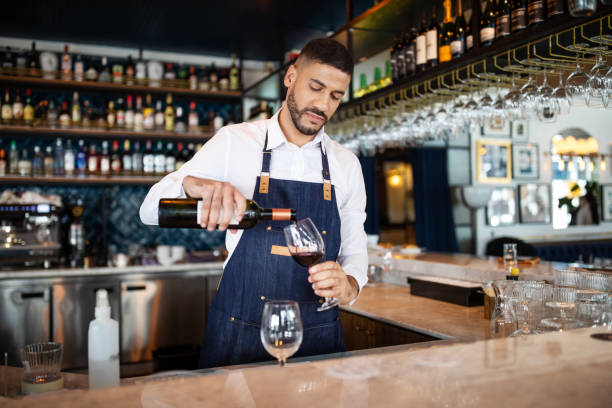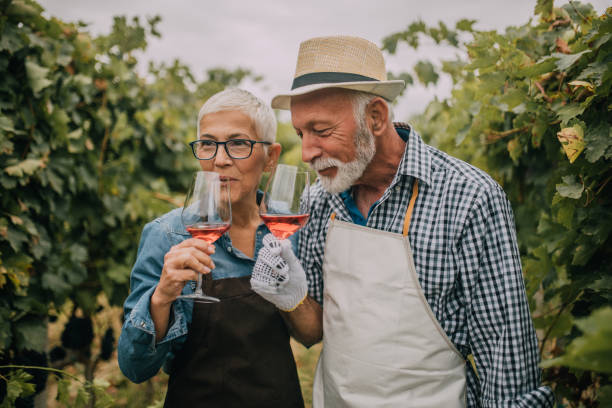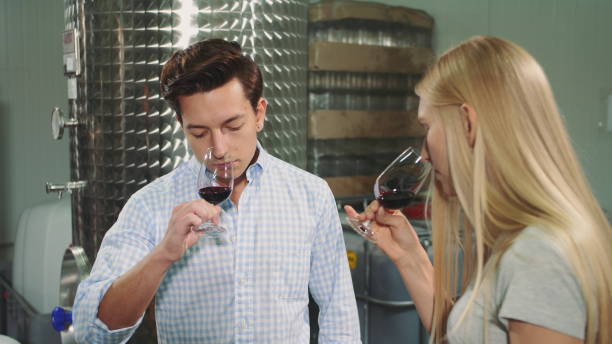The wine industry, deeply rooted in tradition and craftsmanship, has witnessed a transformative journey over the years, with innovation emerging as a key driver of change. In this era of technological advancements and evolving consumer preferences, winemakers are increasingly embracing innovation to enhance production processes, improve quality, and meet the ever-changing demands of the market. This article embarks on a comprehensive meta-analysis to unravel the nuances of innovation in the wine industry, exploring the various dimensions that contribute to its evolution.
I. Historical Perspective:
To understand the contemporary landscape of innovation in the wine industry, it is imperative to delve into its historical roots. Traditionally, winemaking has been a meticulous process passed down through generations, with a strong emphasis on terroir and artisanal practices. However, the industry has not remained impervious to change. The advent of new technologies, scientific advancements, and global market dynamics have spurred a paradigm shift, prompting winemakers to explore innovative approaches.
II. Technological Innovations:
In recent years, the wine industry has witnessed a surge in technological innovations that have revolutionized various stages of production. From smart vineyard management systems to precision winemaking tools, technology is playing a pivotal role in optimizing grape cultivation, harvesting, and processing. Drones equipped with sensors monitor vine health, while machine learning algorithms analyze data to predict optimal harvest times, enabling vintners to make informed decisions and improve overall efficiency.
Additionally, advancements in winemaking equipment, such as automated fermentation control systems and state-of-the-art bottling lines, contribute to consistent quality and increased production capacity. The integration of artificial intelligence (AI) in cellar management has further elevated the precision and control winemakers have over the fermentation process, ultimately enhancing the flavor profile of the final product.
III. Sustainable Practices:
Innovation in the wine industry is not confined to technological advancements alone; there is a growing emphasis on sustainability as a driving force for change. Winemakers are increasingly adopting eco-friendly practices in response to consumer demands for environmentally conscious products. This includes the implementation of organic and biodynamic farming methods, the use of alternative energy sources, and the reduction of water and chemical inputs.
The adoption of sustainable practices extends beyond the vineyard to packaging and distribution. Eco-friendly packaging solutions, such as lightweight glass bottles and recycled materials, are becoming more prevalent. Wineries are also exploring alternative transportation methods to reduce their carbon footprint, contributing to a more sustainable and responsible industry.
IV. Market Trends and Consumer Preferences:
Consumer preferences and market trends play a crucial role in shaping the innovation landscape of the wine industry. The rise of e-commerce, social media, and digital marketing has significantly altered how consumers discover, purchase, and engage with wine brands. Wineries are leveraging these platforms to build a strong online presence, connect directly with consumers, and gather valuable data to tailor their offerings.
The demand for innovative wine experiences has led to the rise of wine tourism and virtual tastings. Wineries are investing in immersive experiences, blending traditional tastings with virtual reality (VR) and augmented reality (AR) technologies to create unique and memorable interactions with their audiences. This trend not only expands the market reach but also fosters a deeper connection between consumers and brands.
V. Globalization and Collaboration:
The globalization of the wine industry has opened doors to diverse collaborations and cross-cultural innovations. Winemakers from different regions are exchanging knowledge, techniques, and grape varieties, leading to the creation of unique blends that reflect a fusion of traditions. Collaborative projects between Old World and New World winemakers are becoming more common, bringing together centuries-old practices with cutting-edge approaches.
Furthermore, international partnerships contribute to the sharing of expertise in research and development. Scientific collaborations facilitate the exchange of insights into vineyard management, disease prevention, and winemaking techniques. This collective approach not only fosters innovation but also ensures the sustainability of the industry in the face of global challenges.
VI. Challenges and Future Prospects:
While innovation brings about positive changes, the wine industry is not immune to challenges. Climate change poses a significant threat to grape cultivation, impacting terroir and necessitating adaptive strategies. Additionally, the integration of technology requires substantial financial investments, which may pose barriers for smaller producers. Striking a balance between tradition and innovation is another delicate challenge, as preserving the essence of winemaking heritage while embracing change requires careful consideration.
Looking ahead, the future of innovation in the wine industry appears promising. Advances in precision viticulture, genetic research, and sustainable practices hold the key to overcoming current challenges. The continued exploration of alternative grape varieties that are resilient to changing climates and the development of innovative winemaking techniques will shape the industry’s response to evolving consumer preferences.
In conclusion, the wine industry is undergoing a profound transformation fueled by innovation. From technological advancements to sustainable practices, market trends, globalization, and collaborative efforts, winemakers are navigating a dynamic landscape. This meta-analysis sheds light on the multifaceted nature of innovation in the wine industry, emphasizing its historical evolution, current trends, and prospects. As the industry continues to evolve, a delicate balance between tradition and innovation will be essential to ensure the sustainability and prosperity of winemaking in the years to come.




